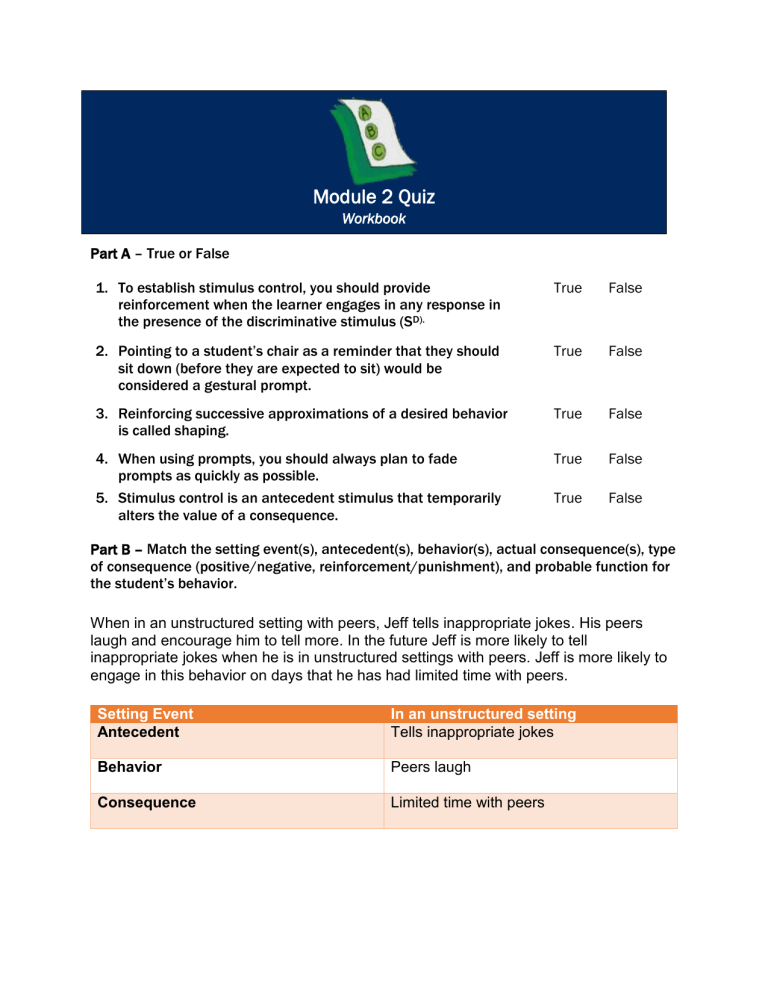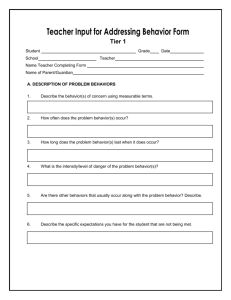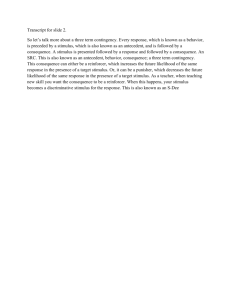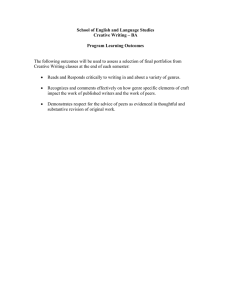
Module 2 Quiz Workbook Part A – True or False 1. To establish stimulus control, you should provide reinforcement when the learner engages in any response in the presence of the discriminative stimulus (SD). True False 2. Pointing to a student’s chair as a reminder that they should sit down (before they are expected to sit) would be considered a gestural prompt. True False 3. Reinforcing successive approximations of a desired behavior is called shaping. True False 4. When using prompts, you should always plan to fade prompts as quickly as possible. 5. Stimulus control is an antecedent stimulus that temporarily alters the value of a consequence. True False True False Part B – Match the setting event(s), antecedent(s), behavior(s), actual consequence(s), type of consequence (positive/negative, reinforcement/punishment), and probable function for the student’s behavior. When in an unstructured setting with peers, Jeff tells inappropriate jokes. His peers laugh and encourage him to tell more. In the future Jeff is more likely to tell inappropriate jokes when he is in unstructured settings with peers. Jeff is more likely to engage in this behavior on days that he has had limited time with peers. Setting Event Antecedent In an unstructured setting Tells inappropriate jokes Behavior Peers laugh Consequence Limited time with peers 1. What is the hypothesized function of Jeff’s behavior? a. Escape or avoid difficulty work b. Get or obtain teacher attention c. Get or obtain peer attention d. Escape or avoid being tired Last week, Rebecca was able to read a grade level passage each time I asked, with relatively few errors and at a desired pace. When I asked her to read the passage one week later, she was still able to read it with few errors and at a desired pace. 2. Which phase of learning best describes Rebecca’s current performance? a. Acquisition b. Fluency c. Maintenance d. Generalization


